Experience Outdoor Bliss: Discover the Top Dropshipping Camping Gear Products in 2024!
Camping, in particular, has seen a resurgence in popularity as a way to connect with nature, recharge, and embark on unforgettable adventures.
If you’re considering starting a business in this vibrant and growing sector, dropshipping camping gear can be an attractive and cost-effective way to enter the market. This business model allows you to provide campers and outdoor enthusiasts with the essential equipment they need for their expeditions while avoiding the complexities and overhead costs associated with traditional retail.
What is Camping Gear dropshipping?
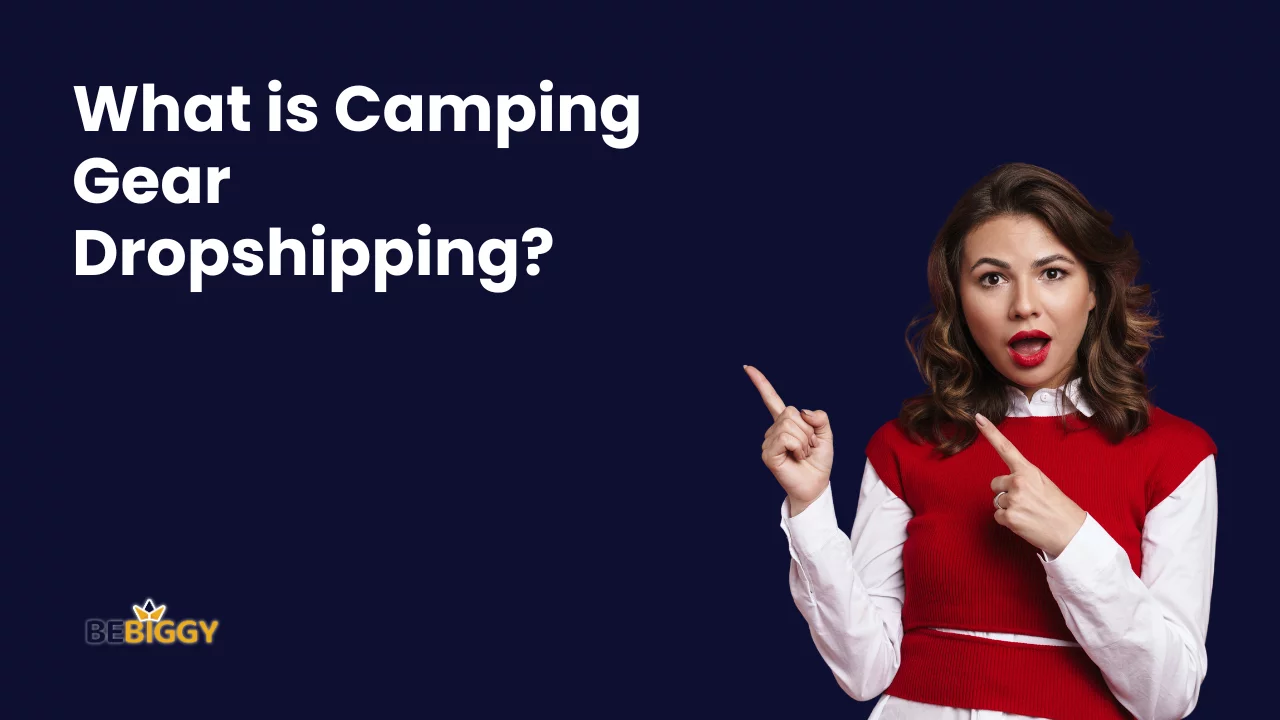
Camping gear dropshipping is a business model where individuals or companies sell camping equipment and gear online without holding physical inventory. Instead, they partner with suppliers or manufacturers who handle inventory and shipping. When a customer places an order, the dropshipper forwards the order to the customer. This allows entrepreneurs to start a camping gear business without the costs and complexities of stocking and managing inventory, making it a popular choice for e-commerce ventures in the outdoor and adventure industry.
Why Dropshipping Camping Gear is a Profitable Business?
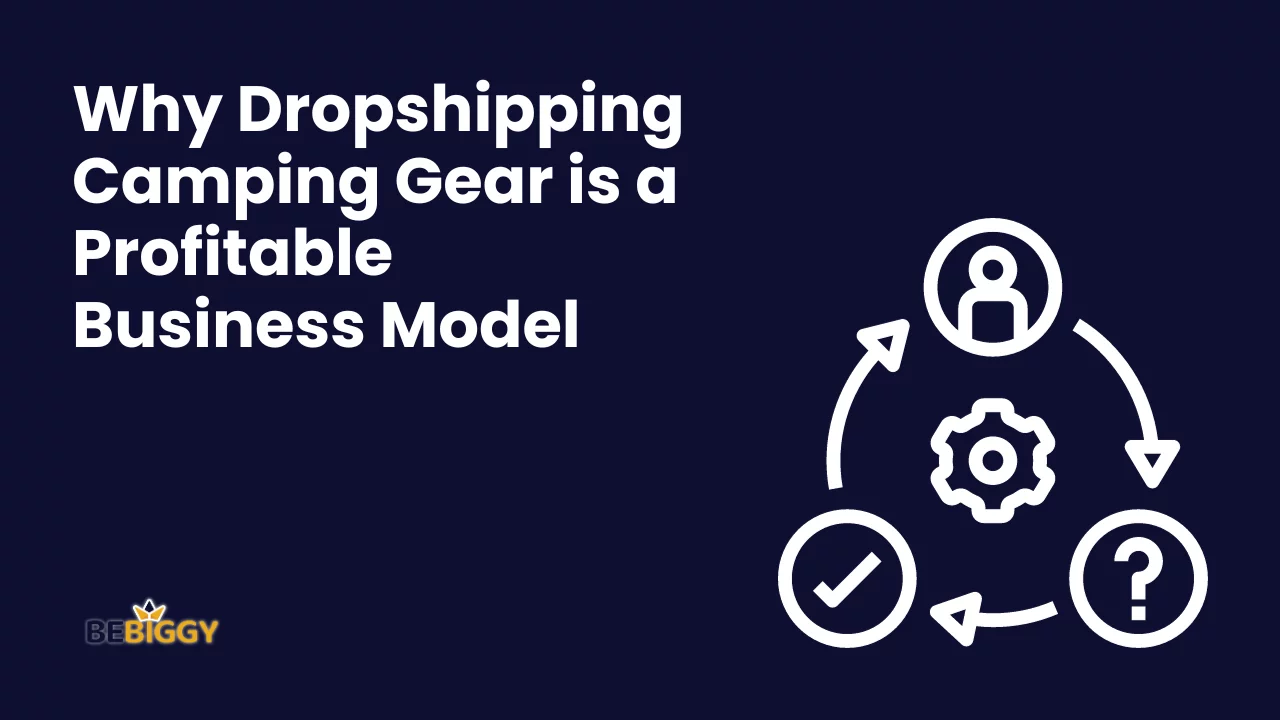
Dropshipping camping gear can be a profitable business model for several reasons:
- Low Initial Investment: Unlike traditional retail models that require substantial upfront investments in inventory, dropshipping requires minimal capital to get started. You only need a website, marketing strategy, and tools or software to manage your business.
- No Inventory Costs: With drop shipping, you don’t need to purchase, store, or manage inventory. This eliminates the costs and risks associated with unsold or obsolete stock.
- More comprehensive Product Range: You can offer a vast range of camping gear products without being limited by storage space. This allows you to cater to a customer base and adapt to changing market trends.
- Flexibility and Scalability: The dropshipping model is highly flexible. You can scale your business up or down and experiment with various niches or product categories.
- Location Independence: You can operate a dropshipping business from anywhere with an internet connection. This flexibility particularly appeals to digital nomads and entrepreneurs who value location independence.
- Reduced Operational Complexity: Dropshipping eliminates the need for tasks like packing and shipping orders. This frees up your time to focus on marketing, customer service, and growing your business.
- Lower Overhead Costs: You don’t need to pay for warehousing, utilities, or other associated costs of maintaining a physical inventory. This results in lower overall overhead expenses.
- Risk Mitigation: Since you invest in products once you’ve made a sale, you’re less exposed to the risk of unsold merchandise or market fluctuations.
- Access to Global Markets: With drop shipping, you can easily reach international customers, expanding your market reach and potentially increasing your revenue.
- Data-Driven Decision-Making: Dropshipping lets you gather valuable customer preferences and product performance data. This data can inform your product selection and marketing strategies.
Success in dropshipping depends on careful product selection, effective marketing, and providing excellent customer service.
Best Camping Gear Products for Dropshipping
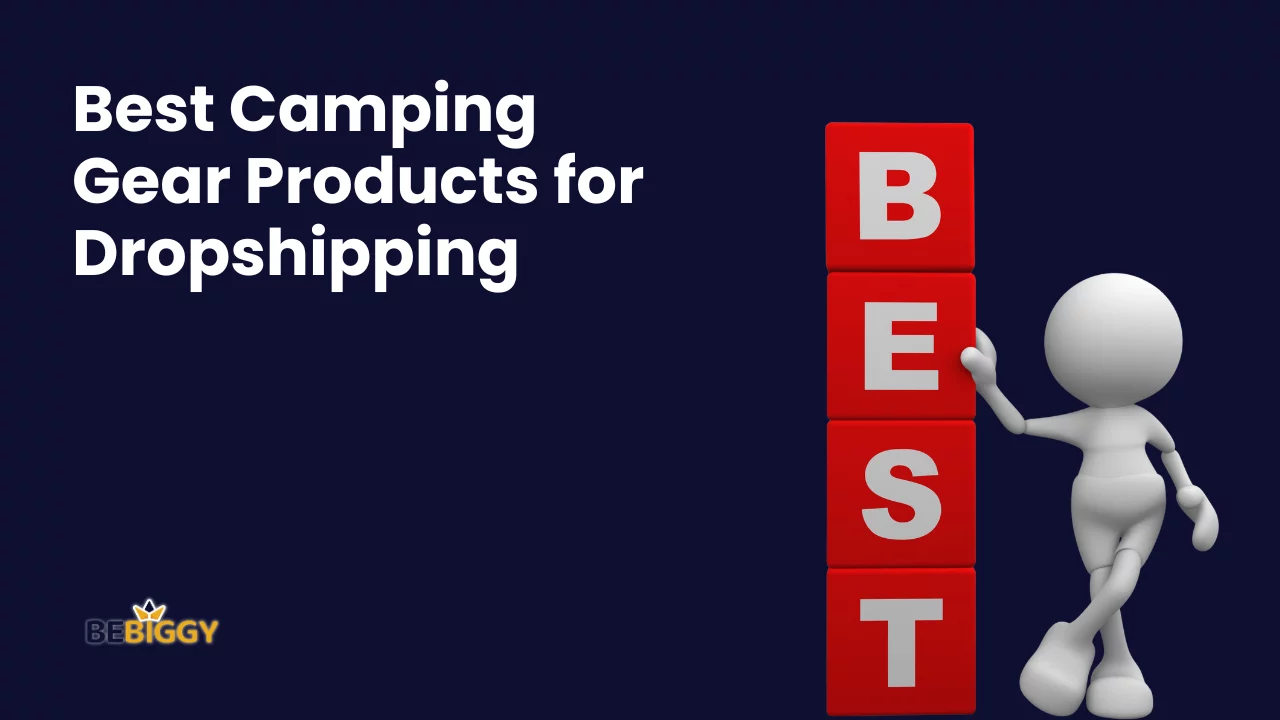
The best camping gear products for dropshipping will depend on your target market and niche within the camping gear industry. Here are some popular camping gear products that tend to perform well in dropshipping:
- Tents: Tents are a staple for campers. Consider offering a variety of sizes and types, from lightweight backpacking tents to spacious family tents.
- Sleeping Bags: High-quality sleeping bags for different seasons and climates are in demand. Look for options with good insulation and durability.
- Camping Stoves: Portable and efficient camping stoves are essential for cooking in the great outdoors. Opt for various styles, including gas, wood-burning, and portable grills.
- Outdoor Clothing: Offer a selection of outdoor clothing, including waterproof jackets, thermal layers, hiking pants, and moisture-wicking shirts.
- Backpacks: Camping backpacks and daypacks are sought after by outdoor enthusiasts. Include options suitable for different trip lengths and purposes.
- Camping Furniture: Campers often look for lightweight and compact camping chairs, tables, and hammocks for comfort during their trips.
- Outdoor Cookware: Pots, pans, mess kits, and utensils designed for camping are essential for outdoor cooking.
- Camp Lighting: Portable lanterns, headlamps, and LED camping lights are famous for illuminating the wilderness.
Let’s delve into more detail for each camping gear product, including key points, features, benefits, and examples:
Tents:
Key Points:
- Tents provide shelter and protection during camping trips.
- They come in various sizes and designs, from compact backpacking tents to spacious family tents.
Features:
- Waterproof and durable materials.
- Easy setup and takedown with color-coded poles.
- Ventilation systems to reduce condensation.
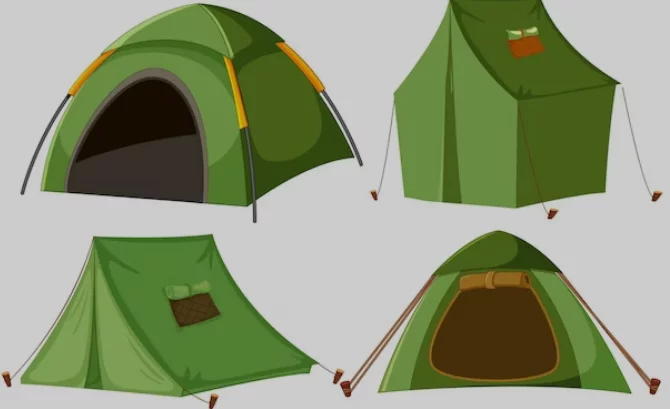
Benefits:
- Protection from the elements (rain, wind, insects)
- Comfortable sleeping and living space.
Examples:
- 4-Person Waterproof Dome Tent for Family Camping
- Ultralight 2-Person Backpacking Tent with Easy Setup
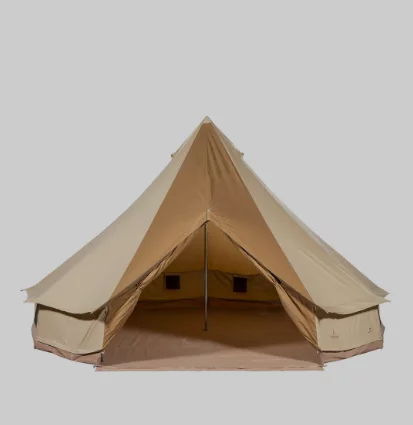
Sleeping Bags:
Key Points:
- Sleeping bags keep campers warm during the night.
- Different bags are suitable for various seasons and temperatures.
Features:
- Insulation for warmth.
- Zipper design for easy access.
- Hood to keep the head warm.
Benefits:
- Comfortable and restful sleep.
- Adaptability to varying weather conditions.
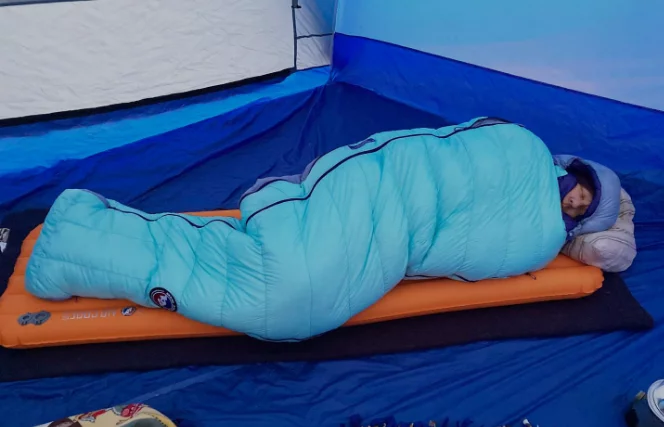
Examples:
- 3-Season Mummy Sleeping Bag for Hiking and Backpacking
- Cold-Weather Sleeping Bag with Heat-Retaining Materials
Camping Stoves:
Key Points:
- Portable stoves for cooking in the outdoors.
- Available in various types, including gas, wood-burning, and multi-fuel stoves.
Features:
- Compact and lightweight design.
- Efficient fuel consumption.
- Easy to assemble and ignite.
Benefits:
- Hot meals and beverages while camping.
- Minimal environmental impact with clean-burning options.
Examples:
- Ultralight Backpacking Gas Stove with Piezo Ignition
- Wood-Burning Camping Stove with Foldable Design
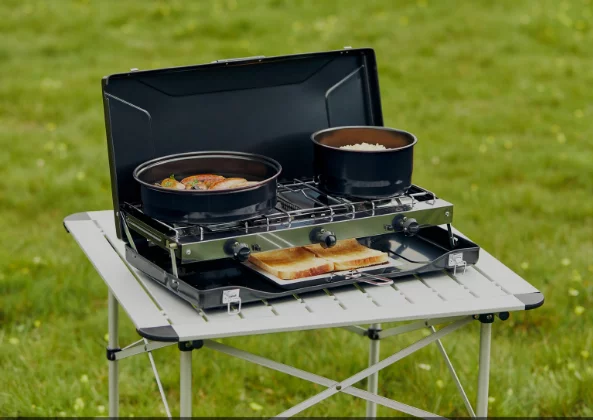
Outdoor Clothing:
Key Points:
- Apparel designed for outdoor activities.
- Includes waterproof jackets, thermal layers, and moisture-wicking shirts.
Features:
- Breathable and moisture-wicking fabrics.
- Insulation for warmth.
- Waterproof and windproof materials.
Benefits:
- Protection from the elements.
- Comfort and functionality during outdoor activities.
Examples:
- Waterproof and Windproof Outdoor Jacket for Hiking
- Moisture-Wicking Base Layer for Camping and Trekking
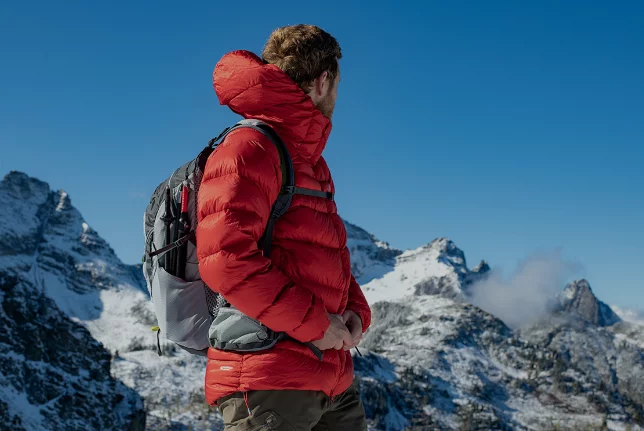
Backpacks:
Key Points:
- Designed to carry camping and hiking gear.
- Available in various sizes and styles.
Features:
- Adjustable straps and harnesses.
- Multiple compartments and pockets.
- Padded back and shoulder straps for comfort.
Benefits:
- Easy gear organization and transportation.
- Comfortable and ergonomic design.
Examples:
- 50-liter Hiking Backpack with Hydration System Compatibility
- Ultralight Daypack for Short Hikes and Outdoor Adventures
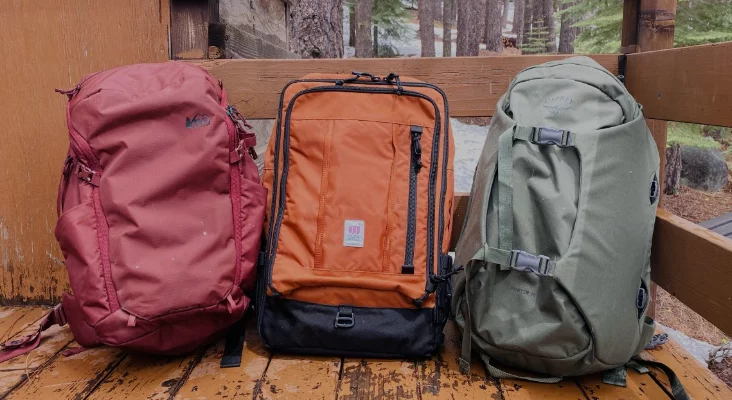
Camping Furniture:
Key Points:
- Portable chairs, tables, and hammocks for campsite comfort.
- Compact and lightweight for easy transport.
Features:
- Durable and weather-resistant materials.
- Foldable and easy to set up.
Benefits:
- Comfortable seating and dining options.
- Enhanced relaxation at the campsite.
Examples:
- Portable Folding Camping Chair with Cup Holder
- Compact Camping Hammock with Integrated Bug Net
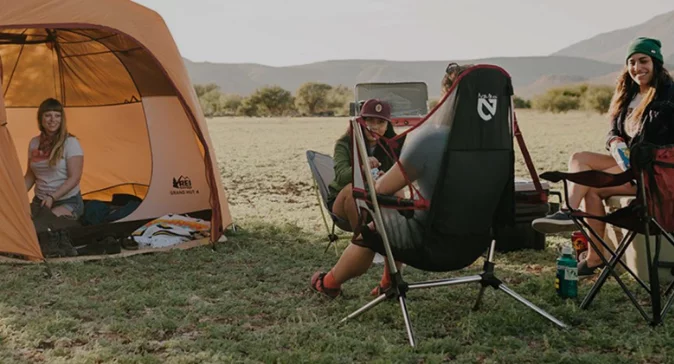
Outdoor Cookware:
Key Points:
- Pots, pans, and utensils designed for camping.
- Compact and lightweight for outdoor cooking.
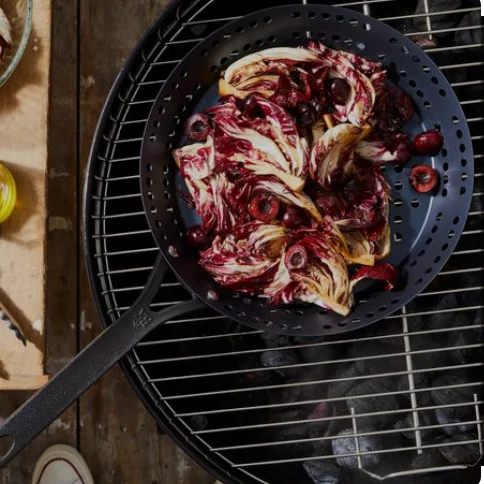
Features:
- Non-stick surfaces for easy cleaning.
- Foldable handles for compact storage.
Benefits:
- Efficient cooking and meal preparation.
- Minimal space and weight in your camping gear.
Examples:
- Non-Stick Camping Cookware Set with Carry Bag
- Titanium Camping Utensil Set for Lightweight Dining”
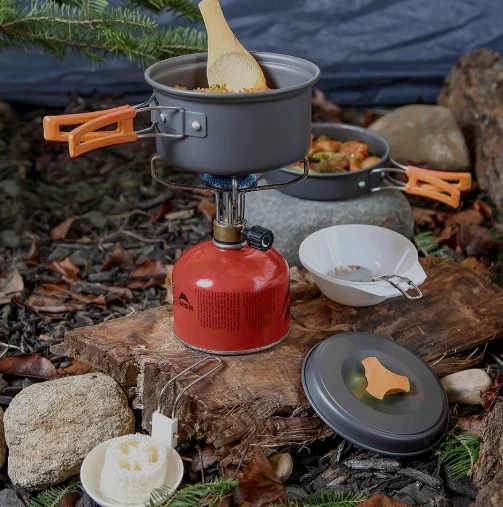
These are just a few examples of camping gear products. Each product offers specific features and benefits designed to enhance the camping experience, and the key is to provide a variety that caters to your target audience’s needs and preferences.
Top Camping Gear Products Suppliers

Finding reliable camping gear product suppliers is crucial for the success of your dropshipping business. Here are some well-known camping gear product suppliers and manufacturers to consider:
- Outdoor Products: Outdoor Products is a supplier known for a wide range of gear, including backpacks, sleeping bags, and camping accessories. They offer a diverse product selection for different camping and outdoor needs.
- Coleman: Coleman is a reputable brand that manufactures camping gear, including tents, coolers, camp stoves, and lanterns. They have a long history in the camping industry and are known for their quality products.
- The North Face: The North Face is a premium brand offering outdoor clothing, gear, and equipment. While they cater to a higher-end market, their products are known for quality and durability.
- Big Agnes: Big Agnes is well-regarded for its camping and backpacking equipment, including tents, sleeping bags, and sleeping pads. They are known for lightweight and high-performance gear.
- MSR (Mountain Safety Research): MSR specializes in outdoor equipment, including camping stoves, water treatment, and cookware. They are recognized for their innovation and quality in outdoor products.
- Osprey: Osprey is a leading manufacturer of backpacks, particularly popular among hikers and backpackers. They offer a variety of backpack styles for different outdoor activities.
- Black Diamond Equipment: Black Diamond is known for its outdoor and climbing gear, which includes headlamps, trekking poles, and camping accessories.
- Jetboil: Jetboil specializes in compact, efficient cooking systems for camping and backpacking. Their products include integrated stoves and cooking pots.
- ENO (Eagles Nest Outfitters): ENO specializes in hammocks and accessories, providing campers with comfortable, portable relaxation options.
- Hydro Flask: Hydro Flask is recognized for its insulated water bottles and drinkware, which are essential for staying hydrated during outdoor adventures.
- Big Agnes: Big Agnes is well-regarded for its camping and backpacking equipment, including tents, sleeping bags, and sleeping pads. They are known for lightweight and high-performance gear.
- Therm-a-Rest: Therm-a-Rest is a respected brand of camping sleeping pads and air mattresses, offering comfort and insulation for a good night’s sleep.
- GSI Outdoors: GSI Outdoors specializes in outdoor cookware, tableware, and camping accessories, making meal preparation in the wilderness easier.
- Marmot: Marmot is a well-known brand for outdoor clothing, including waterproof jackets and insulated apparel, suitable for camping in various weather conditions.
When selecting suppliers, consider factors like product quality, shipping times, pricing, and their willingness to work with dropshippers. It’s also a good practice to read reviews.
Statistics on the Profitability of the Camping Gear Business
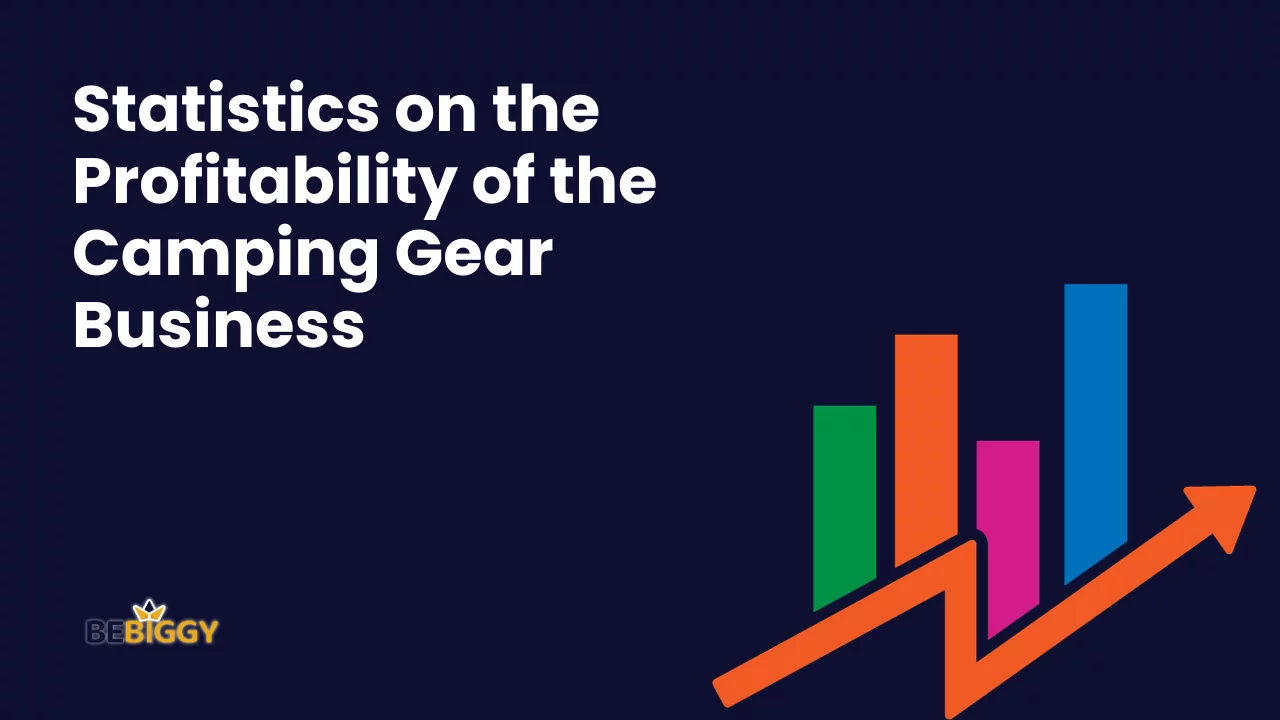
Statistics on the camping gear business’s profitability provide insights into this industry’s financial aspects, including its growth, market size, and profit margins. Here are some key statistics:
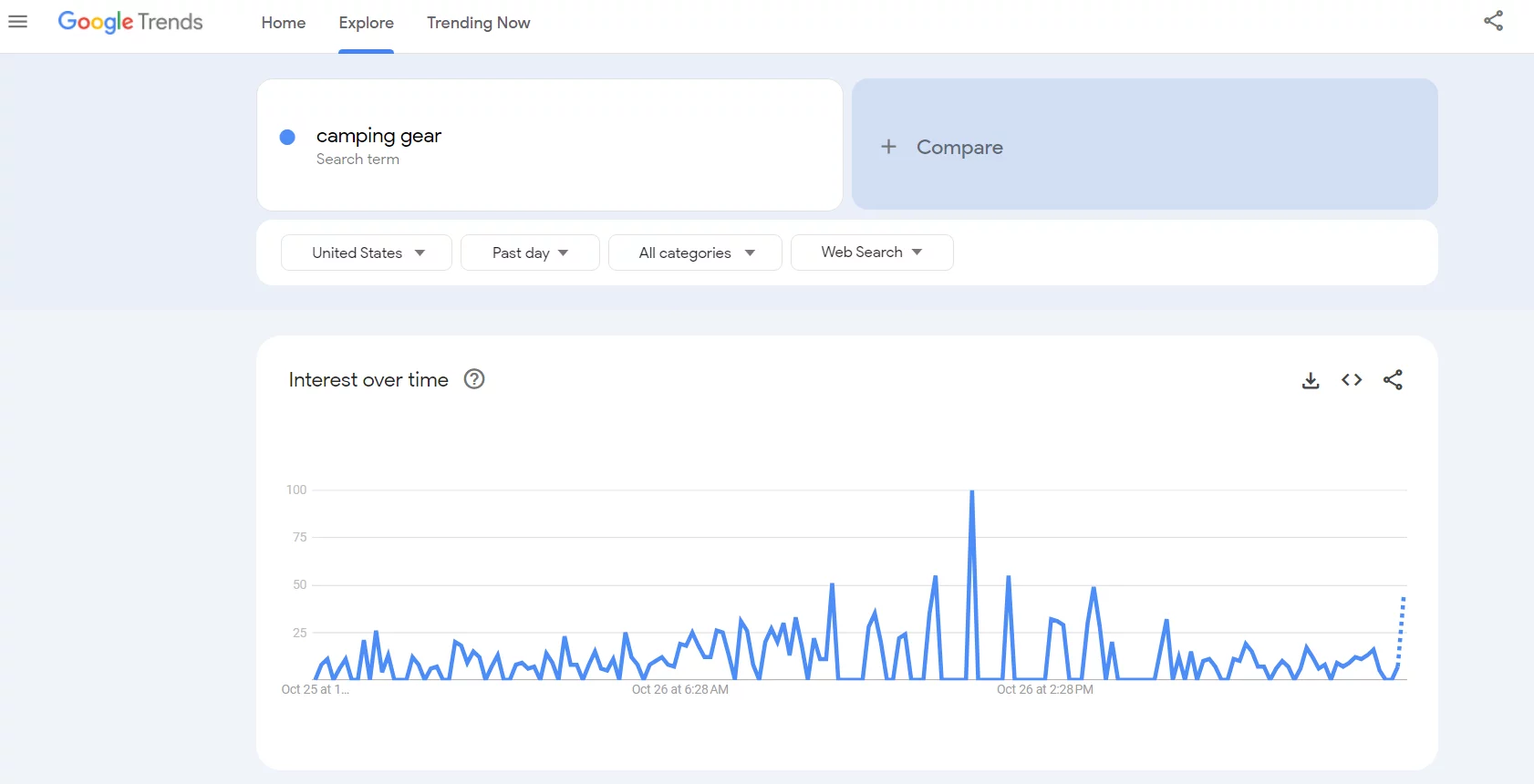
- Market Size and Growth: In 2024, the worldwide camping equipment market will be valued at $21.9 billion. This figure underscores the industry’s significant size and relevance. Moreover, the market is anticipated to experience remarkable growth, with projections reaching an impressive $46.7 billion by 2031. This growth reflects a strong demand for camping gear products.
- Annual Growth Rate: The camping equipment market will grow substantially over the forecast period, with a yearly growth rate of 8.1% from 2022 through 2031. This robust growth rate highlights the industry’s potential for generating profits and capturing a larger market share.
- Profit Margins: On average, profit margins for camping equipment retailers typically range from 20% to 40%. However, it’s essential to note that individual businesses’ profit margins can differ based on various factors, including their operational efficiency and product offerings.
- Consumer Demand: The camping gear industry benefits from strong and consistent consumer demand. As outdoor and recreational activities like camping gain popularity, consumers are increasingly willing to invest in high-quality equipment and accessories. This sustained demand contributes to the overall profitability of the camping gear business.
- Seasonal Variation: Profitability in the camping gear industry often experiences seasonal variations. Sales tend to peak during the warmer months, such as spring and summer, when camping activities are at their height. Businesses usually prepare for these fluctuations by managing their inventory and promotional strategies accordingly.
- Retail Channels: Camping gear can be sold through various retail channels, including physical stores, e-commerce platforms, and specialty outdoor retailers. The choice of retail channels can impact profit margins and operational costs, with e-commerce platforms offering cost advantages and a broader reach.
- Brand and Product Diversity: The profitability of camping gear businesses can be influenced by the diversity of their product offerings and the strength of their brand. Companies that offer a wide range of high-quality products and establish a strong brand reputation tend to enjoy better profit margins.
- Investment in Innovation: Camping gear manufacturers and retailers that invest in product innovation and keep up with industry trends are better positioned to capture market share and maintain profitability. Innovative, eco-friendly, and technologically advanced products can command higher price points and generate substantial sales.
These statistics collectively illustrate the camping gear business’s potential for profitability, driven by a growing market, consumer demand, and the ability to adapt to industry trends.
Trend Analysis of the Camping Gear Business:
The camping gear industry is subject to various trends and developments that shape its landscape. Understanding these trends is crucial for businesses operating in this sector. Here’s a trend analysis of the camping gear business:
- Sustainable and Eco-Friendly Products: One of the prominent trends in the camping gear industry is a growing emphasis on sustainability and eco-friendliness. Businesses that offer sustainable camping gear, such as recyclable and biodegradable products, are gaining favor among environmentally conscious consumers.
- Technological Advancements: Technology is infiltrating the camping gear market, offering innovative solutions for outdoor enthusiasts. From solar-powered camping gadgets to portable water purification systems, technological advancements enhance the convenience and safety of camping experiences. Innovative camping equipment integrating with mobile apps for navigation and weather updates is also rising.
- Lightweight and Compact Gear: Lightweight and compact camping gear is becoming increasingly popular. Campers and hikers are looking for equipment that is easy to carry, especially for backpacking trips. Ultralight tents, compact cookware, and collapsible accessories are gaining traction. These products cater to the needs of minimalist and on-the-go campers.
- Adventure and Experience-Based Camping: The desire for unique camping experiences drives a trend toward adventure-based camping. This includes activities like backcountry camping, wild camping, and glamping. As a result, camping gear designed for specific adventure types, such as mountaineering, off-road camping, or luxury camping, is in demand.
- Inclusivity and Diversity: The camping gear industry is becoming more inclusive and diverse, with products designed to accommodate different demographics, including families, solo campers, and people with varying physical abilities. Tents and equipment with more accessible features and gender-neutral designs are gaining attention.
- Digital Engagement and Community Building: Campers often share their experiences, gear recommendations, and camping tips online, influencing others.
- Local and Sustainable Sourcing: The sourcing of materials and manufacturing of camping gear locally and sustainably is a growing trend. Businesses are prioritizing ethical sourcing practices and supporting local artisans and manufacturers. This trend resonates with consumers who value transparency and ethical production.
- Customization and Personalization: Customized and personalized camping gear is on the rise. Campers seek unique and tailor-made solutions that align with their preferences and styles. Businesses that offer personalized camping equipment, such as custom-designed tents or monogrammed gear, are meeting this demand.
- Rental and Sharing Economy: The rental and sharing economy is entering the camping gear industry. Outdoor enthusiasts who camp infrequently turn to rental services to access high-quality gear without needing long-term investments. Businesses that offer rental options or collaborate with sharing platforms can tap into this trend.
- Safety and Preparedness: Awareness of safety and preparedness while camping is increasing. This trend is evident in the demand for first aid kits, emergency signaling devices, and camping safety courses. Businesses that provide products and educational resources to enhance camper safety are in a favorable position.
- Adaptive and Multifunctional Gear: Versatile camping gear that serves multiple purposes is growing in popularity. Campers appreciate products that can adapt to various situations, reducing the need for multiple items. This trend is exemplified by camping tools with numerous functions and convertible tents.
- Health and Wellness Integration: Health and wellness trends have influenced camping gear, focusing on products that promote physical and mental well-being. Yoga mats for outdoor sessions, ergonomic sleeping pads, and products that encourage mindfulness in nature are examples of this trend.
Sustainability, technology, customization, and inclusivity are shaping the market, offering opportunities for businesses that can adapt to these trends. Staying attuned to consumer demands and technological advancements is vital for success in the camping gear business.
A Step-by-Step Guide to get started in the camping gear Business:

Starting a camping gear business can be a rewarding venture. Here’s a step-by-step guide to help you get started:
Market Research:
- Identify Your Niche: Determine the specific camping gear niche you want to focus on (e.g., backpacking gear, luxury camping, eco-friendly products).
- Target Audience: Understand your target audience’s preferences, demographics, and purchasing behavior.
- Competitor Analysis: Research existing camping gear businesses to identify gaps in the market
Business Plan:
- Define Your Business: Clearly outline your mission, vision, and unique selling proposition (USP).
- Financial Planning: Create a detailed budget, including startup costs, operational expenses, and projected revenue. Consider pricing strategies and profit margins.
- Legal Structure: Choose a structure for your business and register your business name.
Supplier Research and Selection:
- Dropshipping vs. Inventory: Decide if you want to dropship camping gear or maintain inventory—research reliable suppliers and manufacturers.
- Quality Assessment: Ensure the quality and reliability of your suppliers’ products. Request samples if necessary.
Create an E-commerce Store:
- Platform Selection: Choose an e-commerce platform (e.g., Shopify, WooCommerce) to set up your online store.
- Website Design: Create a user-friendly website with high-quality images, detailed product descriptions, and easy navigation.
- Payment and Shipping: Set up secure payment gateways and establish shipping partnerships for timely and reliable deliveries.
Develop a Marketing Strategy:
- Social Media: Leverage social media to show your products and engage with your audience.
- Content Marketing: Create valuable content for camping trips, outdoor adventures, and product guides to attract organic traffic.
- Search Engine Optimization (SEO): Optimize your website for search engines to improve visibility.
Customer Service and Support:
- Responsive Communication: Provide excellent customer service by promptly responding to inquiries and addressing customer concerns.
- Return and Refund Policy: Clearly define your return and refund policies to build customer trust.
- Feedback Collection: Encourage customers to leave reviews and feedback, which can help build your reputation and improve your offerings.
Legal and Compliance:
- Permits and Licenses: Obtain permits to operate your business legally.
- Taxation: Set up a system for collecting and remitting sales taxes. Consult with an accountant to ensure tax regulations.
Launch and Promotion:
- Launch Campaign: Plan a campaign to create buzz around your store. Offer limited-time discounts or promotions to attract initial customers.
- Partnerships: Collaborate with influencers, camping bloggers, or outdoor communities to promote your products.
Evaluate and Adapt:
- Track Metrics: Use analytics tools to monitor website traffic, conversion rates, and sales data. Analyze customer behavior to make informed decisions.
- Adaptation: Stay updated with industry trends. Adapt your product offerings and marketing strategies based on customer feedback and market demands.
Scale Your Business:
- Diversify Products: Expand your product range based on customer demand and market trends.
- Customer Loyalty: Implement loyalty programs or offer exclusive discounts to retain existing customers.
- Explore New Channels: Consider selling on online marketplaces or expanding to international markets to broaden your customer base.
Regularly reassess your strategies and adapt to market changes to ensure the sustained growth of your business.
Is Dropshipping Camping Gear Worth it?
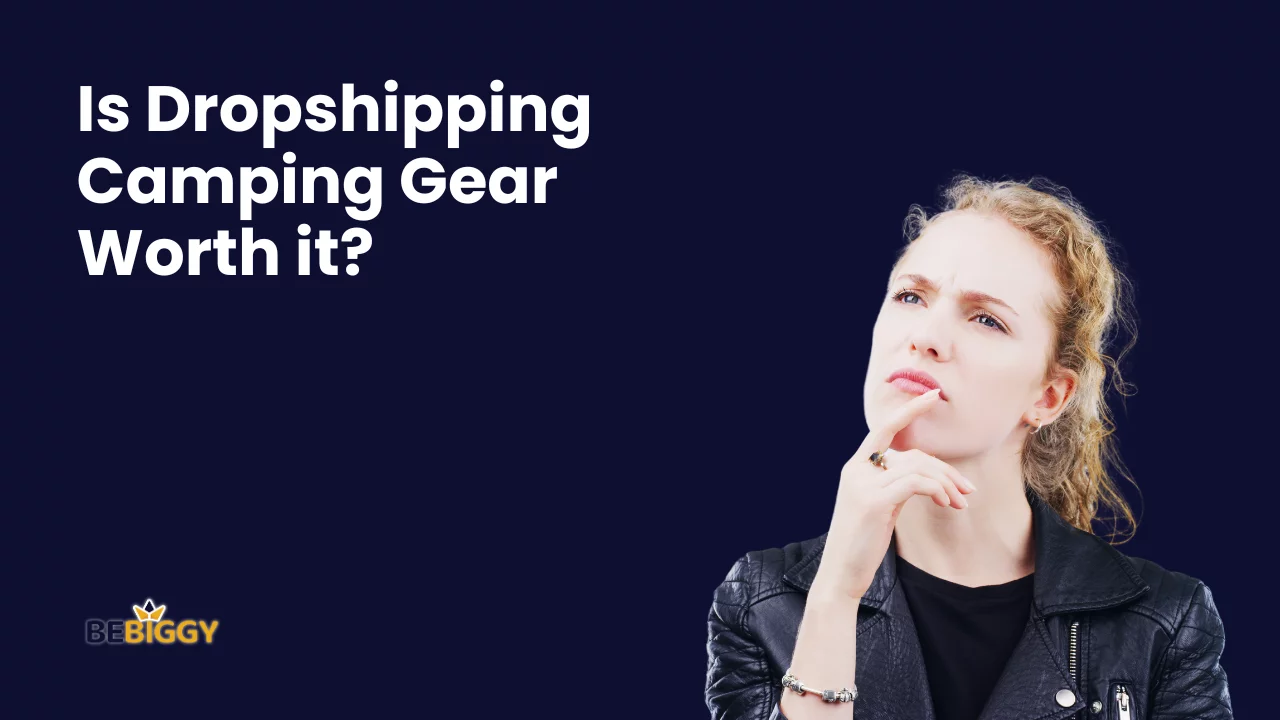
Whether dropshipping camping gear is worth it depends on various factors, including your goals, business strategy, market research, and how well you execute your plan. Here are some pros and cons to consider when evaluating the viability of dropshipping in the camping gear niche:
Pros:
- Low Initial Investment: Dropshipping requires minimal upfront capital compared to traditional retail, as you don’t need to purchase and store inventory.
- Diverse Product Range: You can offer a wide range of camping gear products without the burden of managing physical stock. This enables you to cater to a broader customer base.
- Flexibility: Dropshipping allows testing different products, niches, and marketing strategies without being stuck with unsold inventory.
- Location Independence: You can operate your dropshipping business from anywhere with the internet, offering high flexibility and potential for a location-independent lifestyle.
- Reduced Operational Complexity: Dropshipping minimizes the need for tasks like packing and shipping orders, freeing up your time to focus on marketing.
Cons:
- Competition: The camping gear market can be highly competitive, making it essential to differentiate yourself from other dropshippers and established brands.
- Supplier Dependence: You rely on your suppliers to maintain inventory levels and deliver products promptly. If a supplier has issues, it can impact your business’s reputation.
- Lower Profit Margins: Dropshipping typically offers slimmer profit margins than businesses that buy in bulk and manage inventory. Marketing and operational costs can eat into profits.
- Quality Control: Ensuring product quality and timely shipping can be challenging when you need physical control over inventory. This can lead to customer satisfaction issues.
- Hidden Costs: While the upfront costs are low, you may encounter hidden expenses, such as marketing, software, and subscription fees.
Whether dropshipping camping gear is worth it depends on finding reliable suppliers, effectively marketing your products, and providing exceptional customer service. Success often hinges on your ability to select high-quality products, differentiate your brand, and adapt to changing market conditions.
Why Dropship Camping Gear Products?
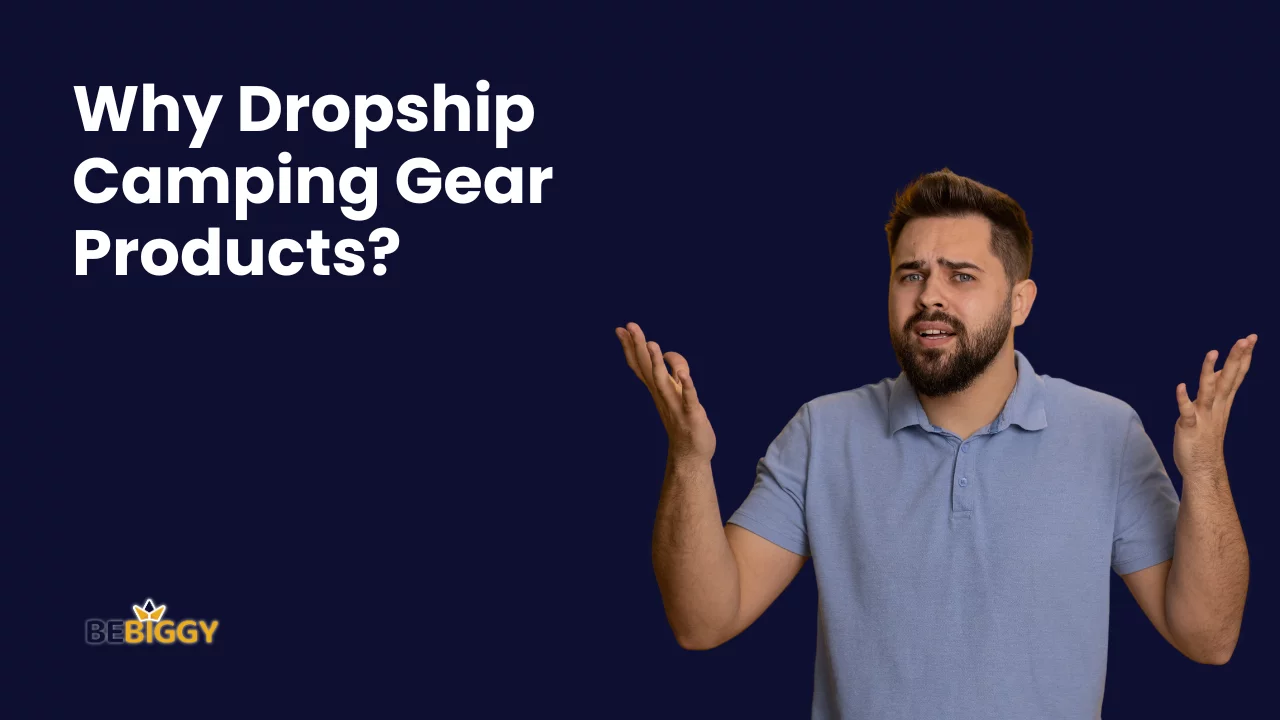
Dropshipping camping gear products can be an appealing choice for several reasons:
- Low Initial Investment: Dropshipping requires minimal upfront capital compared to traditional retail. You don’t need to invest in purchasing and storing inventory, which reduces your financial risk.
- Wide Product Range: With drop shipping, you can offer a diverse range of camping gear products without the constraints of physical storage space. This allows you to cater to various customer preferences and niches.
- Reduced Overhead Costs: Since you don’t have to manage a warehouse or deal with inventory, you can save on associated expenses like storage, utilities, and logistics.
- Flexibility: The dropshipping model offers the flexibility to experiment with different products, adjust your offerings, and adapt to changing market trends without risking inventory.
- Supplier Management: While you don’t handle inventory, you can choose and switch suppliers, allowing you to work with those who offer high-quality products and reliable service.
- Reduced Risk of Overstocking: Traditional retailers often need help with unsold or obsolete inventory. Dropshipping minimizes this risk since you only order products when you’ve already made a sale.
- Global Reach: With drop shipping, you can reach customers globally, expanding your market reach and potentially increasing revenue.
- Data-Driven Decision-Making: By analyzing sales data, customer feedback, and trends, you can decide which products.
While dropshipping offers several advantages, it’s essential to know its challenges. These challenges include finding reliable suppliers, maintaining quality control, and dealing with customer service and returns. Success in dropshipping depends on careful product selection, effective marketing, and the ability to provide outstanding customer service.
FAQ for Top Dropshipping Camping Gear Products

How do I find reliable camping gear suppliers for dropshipping?
Research and reach out to reputable camping gear suppliers and manufacturers. Consider working with established brands and wholesalers in the outdoor industry. Review their product quality, shipping times, and dropshipping policies.
How do I market my camping gear dropshipping business?
You can market your business through social media, content marketing, and search engine optimization. Consider collaborating with camping and outdoor influencers and bloggers to reach a wider audience.
Do I need specific permits or licenses to start a camping gear dropshipping business?
The specific permits and licenses you need can vary based on location. It’s essential to research and comply with local, state, and federal regulations related to e-commerce and dropshipping.
What are the advantages of dropshipping camping gear over traditional retail models?
Dropshipping offers advantages like lower upfront investment, reduced overhead costs, a more comprehensive product range, flexibility in product selection, and location independence.
Can I offer international shipping in my camping gear dropshipping business?
Yes, you can offer international shipping to expand your customer base. However, be aware of international shipping regulations, customs, and import duties. You may need to partner with global shipping providers to streamline the process.
How do I handle product returns and refunds in a dropshipping business?
Establish a clear return and refund policy outlining the customer process. Communicate with your supplier to coordinate returns, replacements, or refunds. It’s important to handle customer issues promptly and professionally.
Conclusion
Your dropshipping camping gear business can flourish in this exciting and growing industry with the right approach, a passion for the outdoors, and a commitment to exceptional customer service. So, step into the world of camping gear, provide outdoor enthusiasts with the equipment to camp comfortably, and embark on your entrepreneurial adventure.
Happy camping and happy business building!









 What Is Shopify Dropshipping and How Does It Work?
What Is Shopify Dropshipping and How Does It Work? 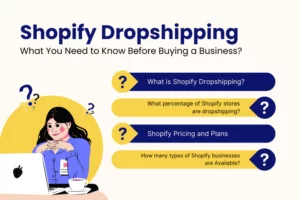 Shopify Dropshipping: What You Need to Know Before Buying a Business?
Shopify Dropshipping: What You Need to Know Before Buying a Business?  How to Dropship on Shopify: Step-by-Step Guide
How to Dropship on Shopify: Step-by-Step Guide  Guide to Finding Reliable Shopify Dropshipping Suppliers [100% Success]
Guide to Finding Reliable Shopify Dropshipping Suppliers [100% Success]